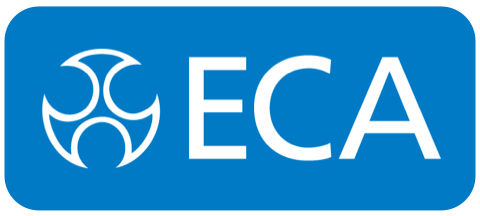
ECA (Electrotechnical Contractors’ Association) and Fire and Security Association (FSA) Members and the wider electrotechnical sector are set to benefit from major updates to emergency lighting standards following a comprehensive review and revision of three key British Standards. The last of these changes came into effect yesterday (29 October) with the publication of the updated BS 5266:2025 Emergency Lighting of Premises: Code of Practice.
The new updates complement amendments made in 2024 to BS EN 1838:2024 Lighting Applications – Emergency Lighting for Buildings and BS EN 50172:2024 Emergency Escape Lighting Systems.
All the updates aim to enhance safety and compliance, as well as provide clearer, more consistent guidance for the design, installation, and maintenance of emergency lighting systems in public and commercial buildings.
Emergency lighting is a vital life-saving measure, guiding occupants to safety during evacuations, power outages, or other emergencies. The revised standards address critical areas including system verification, illuminance requirements, circuit integrity under fire conditions, and documentation protocols, ensuring a higher level of safety and compliance across the built environment.
Mike Smith, Technical Director at ECA, said: “ECA and its Members have made significant contributions to the updated BS 5266, with Member representatives on the British Standards Committee that oversaw the amendments to emergency lighting.
“ECA has created platforms for Member involvement in standards development, ensuring that proposals are grounded in industry expertise and practical application. These efforts have led to clearer guidance, improved safety, and more robust compliance frameworks across the sector.”
Key Updates Across the Standards
-
Enhanced Guidance and Clarity:The three standards now offer more coherent and accessible guidance, with some documents having doubled in length.
-
Emergency Escape Lighting: New lux level requirements apply to the entire width of defined escape routes, not just the centreline. Additional focus for specific areas include toilet and changing rooms, and switchboards associated with the provision of normal and escape lighting within motor generator, control, switch or plant rooms.
-
Circuit Integrity in High-Risk Areas: BS 5266 introduces measures requiring emergency luminaires in high-risk areas to be wired from at least two separate circuits. No more than 20 luminaires may be affected by a single circuit fault.
-
Verification and Testing: While initial verification protocols remain fundamentally unchanged, the revised standards provide more detail and a structured format.
-
Shutdown and Recommissioning Procedures: New recommendations include the requirement for emergency lighting systems be protected from deep discharge during prolonged shutdowns, with clear procedures for safe recommissioning.
-
Photometric Performance Verification: All three standards now require five-year verification of system photometric performance to confirm continued compliance with design criteria.
-
Documentation and Handover: Handover documentation requirements have been clarified, through the addition of more detail and a better layout.
-
Risk Assessment: Continued emphasis throughout the new Standards for a thorough and comprehensive risk assessment to be performed, which forms the basis for emergency lighting design.
These changes are designed to ensure that emergency lighting systems continue to meet evolving safety expectations, with a focus on both initial compliance and the ongoing maintenance of systems throughout the building lifecycle.
Support and Further Guidance
To assist professionals in navigating these substantial updates, ECA and FSA have produced detailed guidance notes and support resources. FSA Members benefit from access to theECA technical helpline, extensive documentation, editable certificates, and an emergency lighting logbook template.
Last updated 30 October 25
